| Below or some questions we were asked to consider while viewing the movie タンポポ (Tampopo) which means "Dandelion" in English.
Though there is one story (the story of Tampopo transforming her dull ramen shop into a place of culinary art) there are other vignettes that find a happy place in the movie.
2. Tampopo's story that is very intertwined with characters: Goro (truck driver who keeps faith in Tampopo and helps to train her into a ramen master), Gun who is Goro's work partner and acts often as comic relief, Pizken who is presented as a rude man sweet on Tampopo but comes around and becomes their team's interior designer, the Sensei who helps Tampopo master her soup making skills (who is a highly respected homeless man from a food loving homeless community) and, Shimei, a chef that was asked to help Tampopo after she saved his boss from choking on mochi. Tampopo also has a son who thinks his mother is tough due to her skills as a "good cook". This team of characters leads us through the adventure of training Tampopo to become a master of ramen (literally with running drills, lifting pots of water, timed ramen preparation drills and, quests to other shops to observe routines that are positive and negative). The vibe we get is very similar to those of a Western movie (and it is actually considered a spoof on Spaghetti Westerns, rather a "Ramen Western" tee hee!). 3. Other snippets are shorter and less visited. This includes a group of business men who go to eat a fancy French lunch. There is one younger assistant who seems to be very clumsy. The menu is in French and after an awkward silence one man orders. All the other men proceed to order the same thing (disguising the fact that they have no knowledge of the French language or the cuisine). Finally, it is the assistants turn to order and we are surprised to see that he knows items on the menu and even the origins and the matching of flavors. At first his boss kicks him under the table because since he is younger, it is out of place to openly display this knowledge beyond his superiors. However he ignores it, set on getting the best meal! The waiter is impressed - and so are the others. This is an example of moving past social convention. Especially in Japan where respect for those "above" you is so crucial, this young man completely disregards it for the sake of food. 4. When Tampopo, her son and Goro go to find Sensei in the homeless community, the other homeless men talking about their great finds in foods and creations. One asks what the son would like and he saus Omuraisu, so they sneak into a kitchen and the man created a very beautiful, scrumptious looking omuraisu dish for the boy. It is a really cute sequence, though they narrowly miss the policeman prowling the building. Here food enjoyment and love breaks through class, even the homeless find good food - making the best with what they have - and still carefully molding their tastes. We are forced as viewers to admire this passion (even when they have so little, they can make so much of it! Wow!) 5. Another moment is when a man is on a train with some awful pain in his mouth. He is served dim sum, but obviously can't enjoy it so he goes to get the trouble checked out. They proceed to surgery and remove something/pop something (I'm not exactly sure) that was in his mouth causing him all this pain. They advise him to eat soft foods so he gets soft ice cream and sits on a bench. He sees a little boy staring at him with a string around his with a message and a chunk of carrot strung onto it saying "Please don't feed me sweets, I only eat natural foods". After thinking and looking at each other, the man gives the child the ice cream - the child starts at it and enjoys it. This is an example of sharing - the act of giving - and especially food sharing is really key in relationships. This is considered a very strong action, providing nourishment - because there is a lot of trust involved as well. It is a very sweet scene. Really quickly a couple more include: 6. The etiquette class on how to eat "Western" style with a spoon and fork. A foreigner in the same restaurant as the class starts slurping up his pasta. The students observe and copy him rather than the teacher (though her original instructions were to not make a sound, the audio becomes a rage of slurps). I think this is breaking rules of etiquette - a mashing of cultures. This is almost very amusing because of the contrast between Japanese and "Western" noodle eating styles. 7. An old woman goes to the super market late at night. We see her with the peaches, and she kneads with her thumbs to a point that makes the view uncomfortable. The flesh is dented and juice spills out. At this point the shop keeper sees what's happening and she moves on to cheese. This sequence is very odd, the old woman and the shop keeper chasing (an abstract gun/action scene of hiding and attacking in an adventure/Western film perhaps but with Pink Panther-esque music). In the end, breads, cheeses and fruits have suffered in her hands but the shop keeper wins, slapping at her hands with a fly swatter. Perhaps we are supposed to never suspect an innocent older woman (who is stereo typically a sweet little grandmother who cooks passionately and provides delicious and beautiful meals of tradition) to be the culprit in such destruction and strangeness. 8. Oops! I forgot one of the beginning scenes where Gun is reading a book about ramen eating. It is visualized for us, and we watch Gun being lead through the very intricate process of how to eat ramen like a master (who has been practicing it for 40 years). 9. For the ending credits, it is a woman breast feeding on a park bench. I feel that this scene finalizes the message - the forms food relationships and food meaning can have in people's lives. Mostly, the pure love of it and the love that is displayed through food. | This movie has too many "Japanese" cultural references to really have the same effect while keeping the story if made in a different culture. Of course, that is my opinion. Things like respecting elders/superiors, the Japanese obsession with refining skills and considering most aspects of life an 'art', gender roles (references to being lady-like, tough paralleling cooking skills etc...). Also I think the other reason that makes this movie hilarious is how Juzo Itami (the director) uses themes/music/cinematic styles of Western movies/adventure movie and what not. It is taking the idea of the hero doing great deeds and setting on a woman making great ramen. Tanpopo waits nervously, seeing if she passes the test - waiting to see if they set the bowl to their lips and drink every last drop of broth! With Tanpopo's success in herself, her shop also succeeds and her son overcomes his bullies and they become friends. Mostly happy ending! |
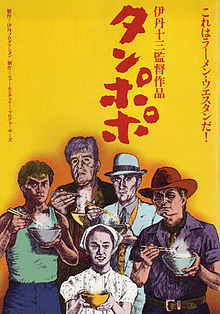
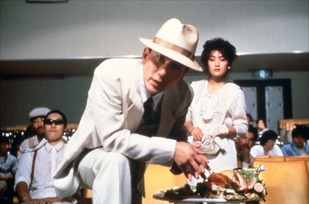
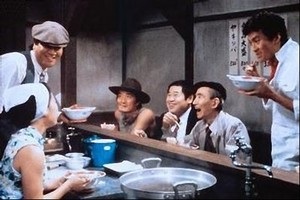
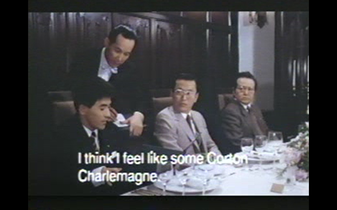
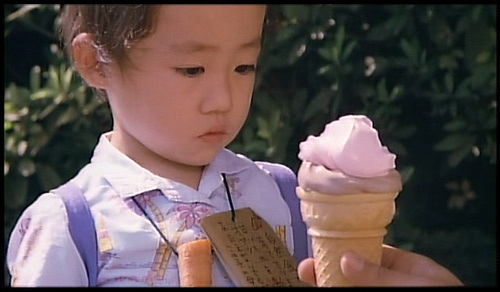
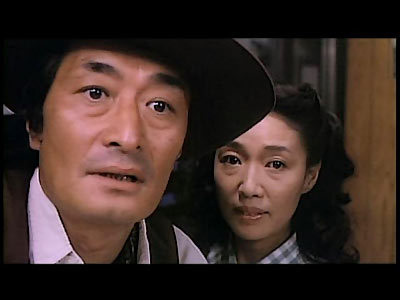
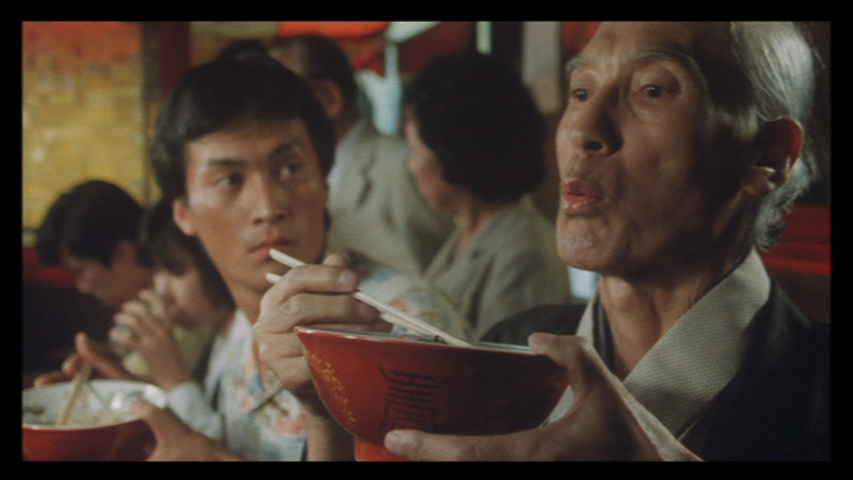
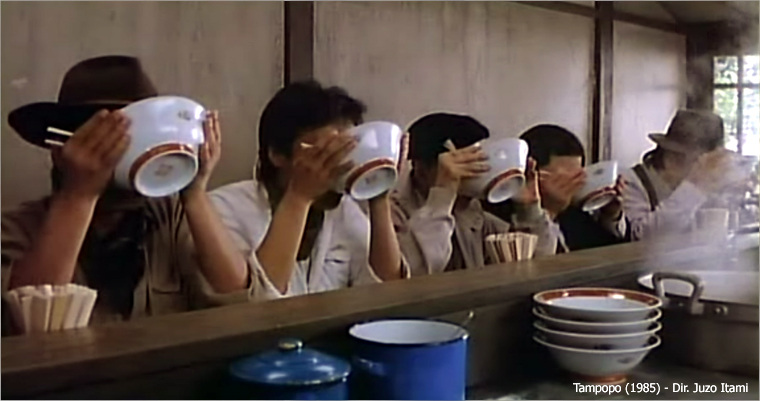
 RSS Feed
RSS Feed